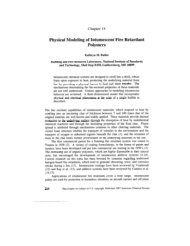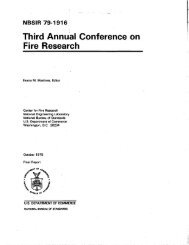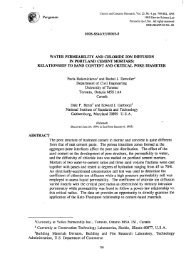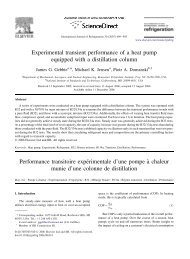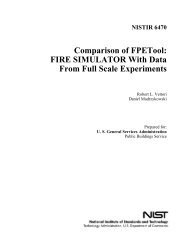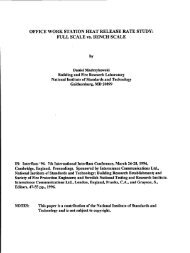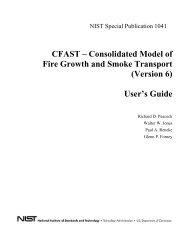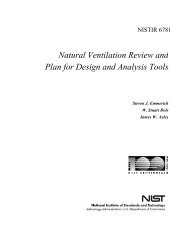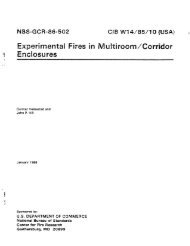Study of Technology for Detecting Pre-Ignition Conditions of ... - NIST
Study of Technology for Detecting Pre-Ignition Conditions of ... - NIST
Study of Technology for Detecting Pre-Ignition Conditions of ... - NIST
Create successful ePaper yourself
Turn your PDF publications into a flip-book with our unique Google optimized e-Paper software.
CPSC-IAG-95-1145<br />
After generating each list, the documents were screened by title and abstract <strong>for</strong> any<br />
potential use related to the two goals. Selected documents were read fb.r better understanding <strong>of</strong><br />
novel methob and designs. The screened lists are provided in Appendix A.<br />
4.2.2 Detector Strategies<br />
The literature and patent search <strong>for</strong> detection and sensor technology was started without<br />
prior bowldge <strong>of</strong> what the pre-i~ition signatures might be if they existed at all. Many<br />
conditions could be assumed based on common sense Su-ch as higher temperatures than those<br />
experienced during safe cooking, some mount <strong>of</strong> smoke, and some increase in veiocity above<br />
the burner due to buoyancy. The other unknown signatures left the scope <strong>of</strong> the search very<br />
broad. The search strategies, located in Appendix B, were based. on primarily looking <strong>for</strong> smoke<br />
and fire detector technologies and then expanding the inquiry to include other kinds <strong>of</strong><br />
temperature, heat, radiatio~ velocity, and hydrocarbon gas sensor technology. Upon completing<br />
the present experimental mewurements, plume velocity and infrared imaging were not found to<br />
be potentially usefid signatures, so their related techologim are not includd. In addition to<br />
papers on the sensed conditions, those on the topics <strong>of</strong> smart sensors, fuzzy logic, and artificial<br />
intelligence used in detectors were examined.<br />
4.2.3 Controls Strategies<br />
Control technology <strong>for</strong> shutiing down gas and electric ranges upon receiving input from<br />
a detection device is not new or innovative. Gas burners in some applimces already have flame<br />
sensors that cause the gas valves to close upon a “no-flame” condition. Smoothtop electric ranges<br />
ah-eady have tiemostit-wntiolled override technology that discontinues current to the heating<br />
elements when the cermic top temperatirm approach levels that could damage the material.<br />
Although these tec~ologies are available in other applications than those proposed, and<br />
itiomation was ~tiered from manufa~rers on the cument application, additional searches<br />
were pefiormed to look <strong>for</strong> novel methods and teckologies that are applied to other equipment<br />
or appmati, but may be utilized <strong>for</strong> these purposes.<br />
1.S ~earc~ Results<br />
4.3.1 Detectors<br />
The searches <strong>for</strong> detectors and sensors resulted in the discovery <strong>of</strong> many technologies with<br />
vqing degrees <strong>of</strong> applicability to the range pre-ignition problem. Perhaps the most valuable<br />
resource as an overview <strong>of</strong> detector tw~ologi~ is a paper by ~osshadler.~” Some <strong>of</strong> the<br />
major detection technologies are compared in Table 4. Smoke detectors <strong>of</strong> the ionization,<br />
photoeltic, mndemation nuclei, and electrostatic types were investigated. These common<br />
smoke detector teckologies are fairly simple and are a logical choice <strong>for</strong> more in-depth inquiry<br />
since the expetimen~l results point towards smoke-relatd phenomena as the most evident<br />
ignition precursors. Ionization detectors require a radioactive ionizing material which would<br />
62



